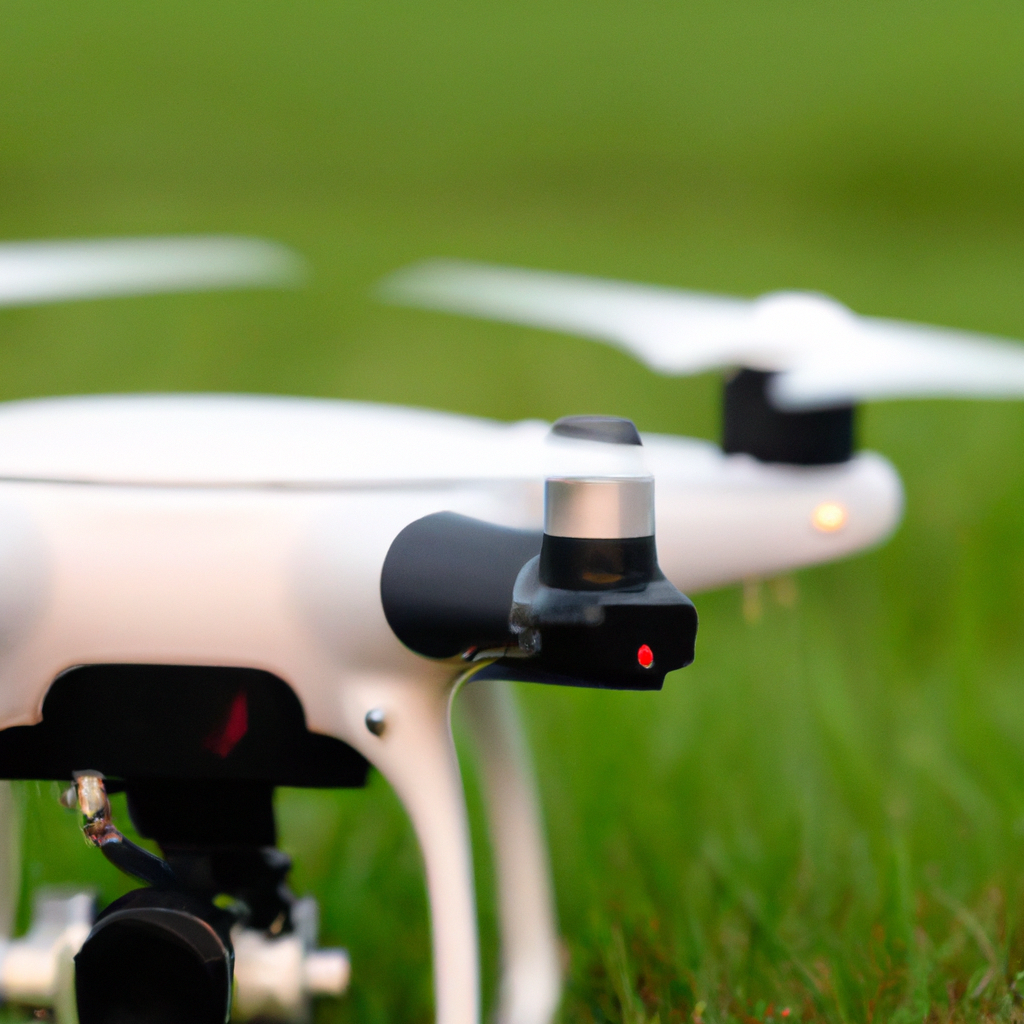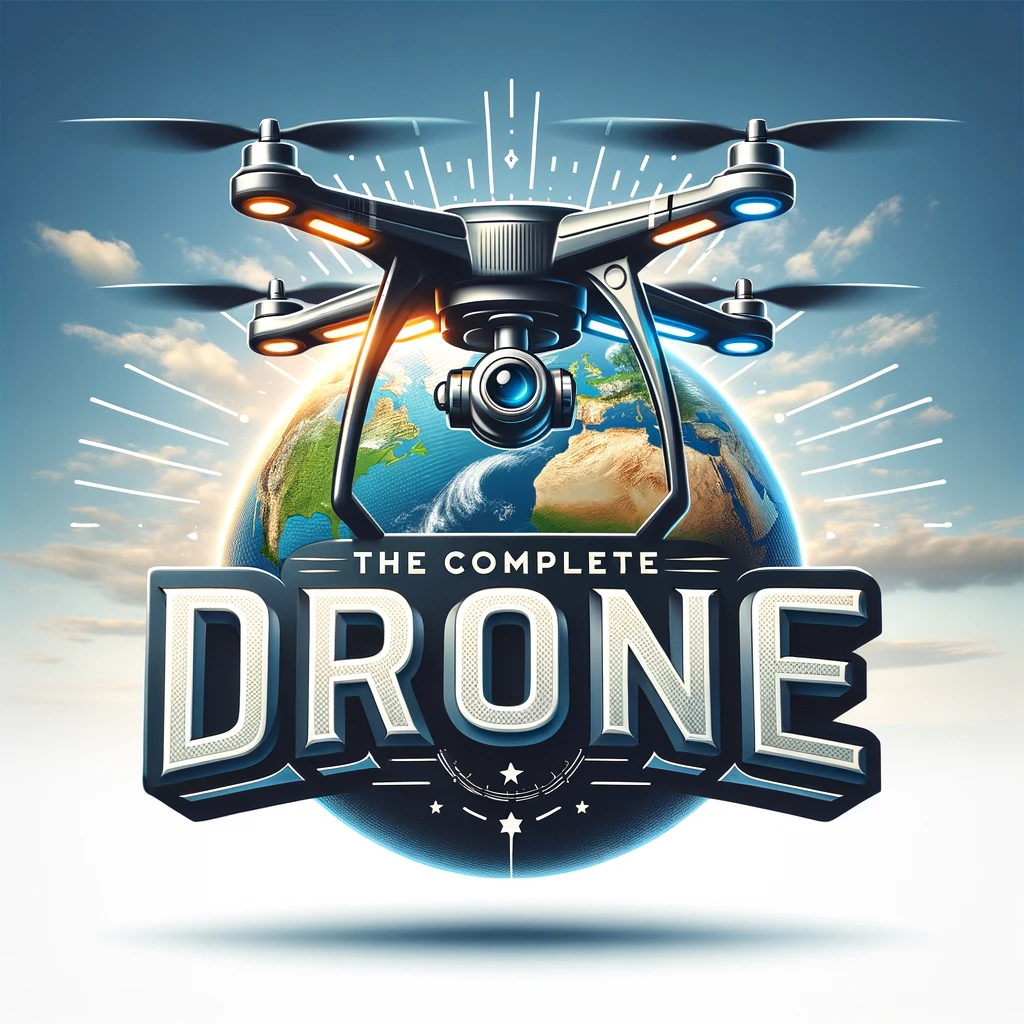Have you ever wondered how to make your drone’s battery last longer? In this article, you will find some helpful tips and tricks to maximize the battery life of your drone. From adjusting your flight settings to choosing the right battery, we’ve got you covered. So, keep reading and get ready to spend more time in the sky with your drone!
Optimize Flight Settings
Reduce Max Speed
To optimize your drone’s battery life, it’s recommended to reduce the maximum speed at which your drone flies. Flying at high speeds consumes more power, as the drone requires more energy to maintain stability and maneuver swiftly through the air. By reducing the max speed, you can conserve battery power and extend your flight time.
Minimize Ascending and Descending
Ascending and descending movements require a significant amount of power from the drone’s battery. To maximize flight time, it is advisable to minimize these movements whenever possible. Instead of constantly going up and down, try to maintain a consistent altitude during your flight. This will help conserve energy and ensure longer flight durations.
Limit Maneuvers
Performing excessive and unnecessary maneuvers during flight not only drains battery life but also increases the risk of collisions or accidents. By limiting your drone’s maneuvers to only those that are essential, you can effectively minimize battery consumption. Focus on capturing your desired shots or aerial footage without indulging in extravagant tricks to prolong your drone’s flight time.
Avoid Windy Conditions
Flying your drone in windy conditions can significantly impact its battery life. The drone’s motors have to work harder to stabilize the aircraft, resulting in increased power consumption. To optimize battery usage, it’s best to avoid flying in excessively windy conditions whenever possible. If you must fly in such conditions, try to fly with the wind to reduce power consumption and extend your flight time.
Proper Battery Handling
Use Fresh and Fully Charged Batteries
Using fresh and fully charged batteries is crucial for optimizing your drone’s battery life. Avoid using old or degraded batteries as they may not hold a charge efficiently, leading to shorter flight times. Before every flight, ensure that your batteries are fully charged and in good condition to maximize your flight duration.
Avoid Overcharging
Overcharging your drone’s batteries can lead to reduced battery life and potential safety hazards. It is essential to monitor the charging process and disconnect the batteries once they are fully charged. Leaving them plugged in for an extended period can cause damage to the battery cells and decrease overall battery performance.
Prevent Over-Discharging
Similarly to overcharging, over-discharging your drone’s batteries is detrimental to their lifespan. Always monitor the battery voltage during flight and land your drone before the battery levels become critically low. Discharging the batteries beyond their recommended levels can cause irreversible damage, reducing overall battery capacity and flight time.
Store Batteries Properly
Properly storing your drone’s batteries when not in use is crucial for maintaining their health and performance. Store them in a cool and dry place, with a moderate temperature range. Avoid exposing the batteries to extreme heat or cold, as it can lead to degradation and shorter battery life. Additionally, ensure that the batteries are not stored fully charged or fully depleted, as this can also affect their long-term performance.

This image is property of images.pexels.com.
Optimal Flying Conditions
Fly in Moderate Temperatures
Extreme temperatures, both hot and cold, can have a significant impact on your drone’s battery performance. The ideal operating temperature for most drones falls within a moderate range. Flying in moderate temperatures ensures efficient battery utilization and extends flight time. Avoid flying in excessively hot or cold conditions whenever possible, as it can lead to decreased battery life and performance.
Avoid Extreme Weather
Apart from temperature, other weather conditions such as rain, snow, or strong winds can negatively affect your drone’s battery life. These conditions often force the drone to work harder to maintain stability and maneuverability, resulting in increased power consumption. It is advisable to avoid flying in extreme weather conditions to protect your drone and maximize battery usage.
Choose Lighter Equipment
The weight of your drone and its equipment directly impacts battery life. Opting for lighter equipment, such as cameras or additional accessories, can help reduce the overall weight of the drone. A lighter drone requires less power to maintain flight, which, in turn, increases battery efficiency. Consider the weight of your equipment and make thoughtful choices to maximize flight time.
Reduce Payload Weight
In addition to choosing lighter equipment, minimizing the payload weight can also have a significant impact on your drone’s battery life. The payload refers to any additional items or objects carried by the drone, such as a delivery package or external sensor. By reducing the payload weight, you decrease the power required to lift and carry it, thus improving battery efficiency and flight time.
Battery Maintenance
Regularly Calibrate Battery
Calibrating your drone’s battery periodically is essential for maintaining accurate battery level readings and maximizing battery life. Check your drone’s user manual for instructions on how to calibrate the battery properly. Regular calibration ensures accurate power readings, preventing premature battery depletion and improving overall flight performance.
Clean Battery Contacts
Maintaining clean and properly connected battery contacts is crucial for efficient power transfer between the battery and the drone. Over time, dirt, dust, or corrosion can accumulate on the battery contacts, affecting the quality of the connection. Clean the battery contacts with a soft cloth or a cleaning solution recommended by the drone manufacturer to eliminate any debris and ensure optimal battery performance.
Check for Damage or Swelling
Regularly inspecting your drone’s batteries for any signs of damage or swelling is essential for safe and efficient operation. Damage or swelling may indicate internal issues within the battery, reducing its overall capacity and lifespan. If you notice any damage or swelling, it is advisable to replace the battery immediately to avoid any potential safety risks.
Replace Old Batteries
As with any battery, drone batteries have a limited lifespan. Over time, the battery’s capacity will naturally degrade, leading to shorter flight times. It is essential to monitor the performance of your drone’s batteries regularly. Once you notice a significant decrease in flight time or performance, it’s time to replace the old batteries with new ones to ensure optimal flight durations.

This image is property of images.pexels.com.
Propeller Efficiency
Use High-Quality Propellers
Using high-quality and well-balanced propellers is crucial for maximizing your drone’s overall efficiency and extending battery life. Low-quality or damaged propellers can create vibrations and imbalances, leading to increased power consumption. Invest in reputable propellers that are designed for your specific drone model to ensure smooth and efficient flight operations.
Ensure Proper Installation
Properly installing the propellers on your drone is vital for optimal performance. Ensure that each propeller is securely attached and tightened according to the manufacturer’s instructions. Loose or incorrectly installed propellers can create unnecessary vibrations, resulting in increased power consumption and decreased battery efficiency.
Check for Damage or Deformation
Regularly inspecting your drone’s propellers for any signs of damage or deformation is crucial for safe and efficient flight operations. Bent or damaged propellers can cause imbalances, leading to decreased performance and increased power consumption. If you notice any signs of damage, it is advisable to replace the propellers immediately to ensure smooth and efficient flight operations.
Avoid Propeller Imbalances
Imbalanced propellers can cause unnecessary vibrations, affecting both the flight stability and battery life of your drone. After installing new propellers or after any impact or crash, it’s vital to check and balance the propellers. Propeller balance can be achieved using specialized balancing tools or by referring to the manufacturer’s instructions. By avoiding propeller imbalances, you can optimize flight efficiency and prolong battery life.
Flight Control Systems
Update Firmware Regularly
Keeping your drone’s firmware up to date is essential for optimizing flight control systems and improving overall battery efficiency. Manufacturers often release firmware updates that address bugs, enhance flight performance, and optimize power management. Regularly check for firmware updates provided by the manufacturer and install them following the provided instructions to ensure maximum performance and battery life.
Optimize Flight Modes
Most modern drones come with various flight modes that offer different functionalities and performance characteristics. By selecting the appropriate flight mode for your specific needs, you can optimize battery usage. For example, choosing a more energy-efficient flight mode for simple aerial photography or videography rather than a high-speed sport mode can significantly extend your drone’s battery life.
Avoid Excessive Hovering
Hovering in a fixed position consumes a significant amount of power from the drone’s battery. While hovering may be necessary for certain tasks or capturing specific shots, try to avoid excessive hovering whenever possible. Plan your flight paths efficiently to minimize unnecessary hovering time and conserve battery power for other maneuvers or prolonged flight durations.
Minimize Signal Interference
Signal interference can cause your drone’s flight control system to work harder to maintain a stable connection, resulting in increased power consumption and decreased battery life. To minimize signal interference, fly in open areas away from sources of interference such as power lines or crowded Wi-Fi frequencies. Ensuring a clear and reliable signal can optimize your drone’s flight control systems, maximizing battery efficiency.

This image is property of images.pexels.com.
Avoid High Altitudes
Fly at Lower Altitudes
Flying at lower altitudes can help optimize your drone’s battery life. Higher altitudes often necessitate increased power consumption due to lower air density and increased air resistance. By flying at lower altitudes, you can reduce the amount of power required to maintain flight, ultimately extending your drone’s battery life.
Avoid Thin Air
Flying in environments with thin air, such as high altitudes or extreme mountainous regions, can significantly impact your drone’s battery life. Thin air provides less aerodynamic lift, forcing the drone’s motors to work harder, increasing power consumption. It is advisable to avoid flying in thin air conditions whenever possible to optimize battery usage and ensure longer flight durations.
Limit Flights at High Altitudes
While it is best to avoid flying at high altitudes, there may be instances where you need to fly in such conditions. If you find yourself in such a situation, it’s important to limit the duration of your flight. High altitudes require increased power consumption, leading to shorter flight times. Monitor your battery levels closely and plan your flight accordingly to ensure a safe return and avoid depleting the battery completely.
Monitor Battery Levels Closely
Flying at high altitudes or thin air conditions can have a significant impact on your drone’s battery life. It is crucial to monitor your battery levels closely to ensure a safe return and prevent the battery from depleting completely. Consider using a battery monitoring system or setting up battery level alerts to keep track of the remaining power during your flight.
Efficient Camera Usage
Minimize Live Streaming
Live streaming footage from your drone can consume a significant amount of power. The constant transmission of high-quality video requires a stable internet connection and drains battery life quickly. To optimize battery usage, minimize live streaming during your flights. Instead, focus on capturing the necessary footage and stream it later when the drone is safely landed and connected to a power source.
Reduce Camera Usage Time
Activating your drone’s camera for an extended period can also impact battery life. To maximize flight time, only use the camera when necessary and avoid leaving it continuously recording throughout the entire flight. Limiting camera usage time conserves battery power and ensures a longer overall flight duration.
Lower Camera Settings
Higher resolution and frame rates on your drone’s camera require more processing power, which can lead to increased power consumption. To optimize battery usage, consider lowering the camera settings to a more moderate resolution or frame rate. Assess the balance between image quality and battery life to suit your specific needs for each flight.
Avoid Unnecessary Recording
Recording unnecessary footage not only consumes storage space but also drains valuable battery life. Be mindful of when to start and stop recording during your flights. Capture the shots or moments you specifically require, rather than recording the entire flight. By avoiding unnecessary recording, you can extend your drone’s battery life and have more room for capturing essential footage.

Reduce LED Usage
Disable or Dim LEDs
Most drones come equipped with LEDs that serve various purposes, such as indicating flight status or improving visibility during low-light conditions. However, these LEDs consume power, potentially reducing overall battery life. Disabling or dimming the LEDs when not necessary can help conserve battery power and extend your drone’s flight time.
Use LEDs Only When Necessary
While LEDs can be helpful in certain situations, it’s important to assess whether they are truly necessary for your flight. Utilize the LEDs only when they serve a specific purpose, such as indicating battery levels or enhancing visibility during twilight flights. By using the LEDs sparingly, you can optimize battery usage and prolong flight durations.
Avoid High-Intensity LED Modes
Some drones may have high-intensity LED modes that include flashy patterns or vibrant colors. While these modes may be visually appealing, they consume a significant amount of power. To conserve battery life, avoid using high-intensity LED modes and opt for more conservative settings that provide the necessary functionality without excessive power consumption.
Switch Off LEDs During the Day
During daylight flights, the LEDs on your drone are less critical for visibility. Switching off the LEDs during daylight flights helps conserve battery power. By disabling the LEDs when they are not essential, you can optimize your drone’s battery usage and prolong flight time for more critical missions or longer recreational flights.
Increase Drone Efficiency
Regularly Maintain and Clean Drone
Regular maintenance and cleaning of your drone are essential for ensuring optimal performance and maximizing battery life. Inspect your drone regularly for any signs of damage, loose parts, or accumulated dirt or debris. Clean the drone’s body, propellers, and camera lenses with a soft cloth or appropriate cleaning solution recommended by the manufacturer. By keeping your drone well-maintained, you can optimize its efficiency and prolong battery life.
Optimize Flight Path Planning
Efficient flight path planning can significantly impact your drone’s battery life. By optimizing your flight paths with shorter distances and fewer unnecessary movements, you can minimize power consumption and prolong flight durations. Consider the objectives of your flights and plan the most direct and efficient routes to ensure optimum battery usage.
Reduce Wind Resistance
Reducing wind resistance is crucial for maximizing your drone’s efficiency and battery life. Attach any necessary accessories or payloads securely to the drone to minimize drag. Additionally, flying against strong headwinds can increase power consumption. When possible, fly with the wind to reduce resistance and optimize battery efficiency.
Balance Performance and Battery Life
Finding the right balance between performance and battery life is essential for maximizing your drone’s efficiency. While high-speed flights and maneuvers may be exciting, they consume more power and decrease overall flight times. Assess your priorities and adjust your flying style accordingly. By prioritizing battery life over extravagant maneuvers, you can optimize your drone’s efficiency and enjoy longer flights.
In conclusion, optimizing your drone’s battery life involves various strategies and considerations across different aspects of drone operation. By effectively managing flight settings, properly handling and maintaining batteries, flying in optimal conditions, and utilizing efficient camera and drone usage techniques, you can significantly extend your drone’s flight time. Emphasizing battery optimization ensures you can achieve your desired aerial shots or complete necessary tasks while being mindful of battery health and longevity. Remember to always prioritize safety, adhere to local regulations, and consult your drone’s manufacturer for specific guidelines and recommendations. Happy flying!


